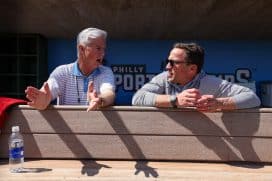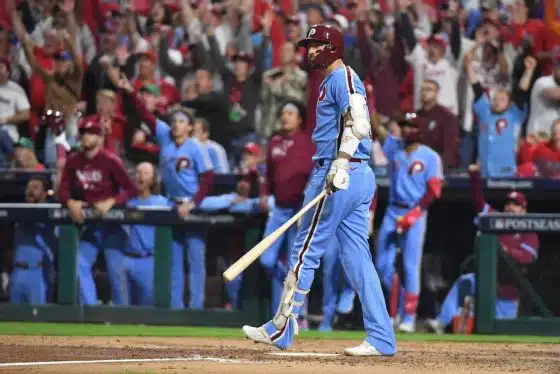Union
NYRB Youngster Caden Clark is On His Way to Europe—Here’s What That Means for the Union
By Siobhan Nolan, Contributing Writer
About a year ago, Brenden Aaronson and Mark McKenzie departed the Union for RB Salzburg and KRC Genk, respectively. Both were Homegrown players in the Union academy, both had only been regulars in the first team for a little over a year at that point, but both had been receiving serious attention from European clubs for a while.
It sounded almost too good to be true. Two players who had been brought up exclusively in the MLS system were now packing their bags and heading off to the elite leagues of Europe. Salzburg had paid $6 million for Aaronson, making the New Jersey native the most expensive Homegrown transfer in MLS history. To put it simply, this was historic.
Now, New York Red Bulls forward Caden Clark announced in June that he would be moving to German club RB Leipzig, coached by fellow American Jesse Marsch. It made sense, considering the fact that Clark is one of the most exciting young players in MLS right now. The only thing that kept him from making the leap to Europe earlier is the fact that he didn’t turn 18 until May of this year, barring any move to Europe without an EU passport.
From the standpoint of an American soccer fan with no biases in MLS, it’s unbelievably exciting to have yet another young American player (especially one that came up through an MLS youth system) make the transition to Europe. However, as a Union fan, it puts the pressure on to keep being able to compete in the production of young talent.
The Union’s academy was recently ranked first in MLS, and manager Jim Curtin firmly believes in giving young players as many opportunities in the first team as possible. In 2021, Homegrowns Quinn Sullivan, Paxten Aaronson, and Jack McGlynn all signed their first professional contracts. Although they haven’t seen much first team action, it was still comforting to see that Curtin’s focus on the academy hadn’t wavered.
Speaking during the 2021 season, Curtin made it a point to acknowledge that although young, the Union’s Homegrown players were well-equipped to play at the professional level.
“All of those players showed that they belong already. For 16 and 17-year-olds to jump in and play against Ilsinho, [Kacper] Przybylko, [Jamiro] Monteiro, and [Jakob] Glesnes and [play] well speaks for the talent they have,” Curtin said in a preseason press conference. “There are a lot of new, younger faces, but they’re not unfamiliar faces. They’ve been in and around this club for several years while in the academy. It’s what we believe in as a club and it’s been proven through the years if you give these young guys a chance, more times than not they’ll impress you.”
However, it looks as though the academy might be resting on their laurels a bit too much. It’s easy to see how the astronomical and seemingly overnight success of Aaronson and McKenzie could get to the club’s heads, but there’s simply no room to sit back and get complacent. The market for young players is getting more and more competitive with every passing day, and the Union only hold a narrow advantage because of Aaronson and McKenzie. That lead won’t last.
With Clark headed off to Salzburg (which, admittedly, is a bigger and more well-known club than the teams Aaronson and McKenzie transferred to), the pressure is on. The United States is finally starting to become more like Europe in the sense of competition within its youth systems. On its way out are the days when there was one star player on a team that got all the attention without having to do much of the work. Now, there’s a real chance that young American players will get their opportunity to play in MLS on a more consistent basis—and, as evidenced by the past year and a half, Europe as well.
While it wouldn’t exactly be ideal for MLS to become a feeder system for European clubs, as there’s still a need for young players to stay in America to legitimize the American system, the reality is that these young players want to go to Europe as their ultimate goal. Many of them don’t want to stay in MLS past the age of 18 (the age where young non-European players can sign for European clubs without an EU passport. It’s disheartening, but it’s true, and it will take years for the MLS to catch up to Europe. If the young players don’t want to stay, then the best their clubs can do is make them as ready as possible for wherever their career takes them. At the very least, nobody will be able to say that American youth development is inadequate.
The Union have a plethora of gems in their youth system—Paxten Aaronson, Quinn Sullivan, Jack McGlynn, etc.—and those are just the more well-known names. With Curtin and Ernst Tanner, who recently signed a multi-year contract extension with the Union, at the helm, the club is in a prime position to maintain this level of excellence in youth development. That being said, there can’t be any rest for the weary. In the 2021 soccer world, it doesn’t matter what a club did last season. What matters is that any success achieved in the past can be replicated consistently, meaning that the Union have to keep producing young players worthy of playing at the top level, wherever in the world that may be.
Rome wasn’t built in a day. It’s about progress, not perfection. However you want to phrase it, one thing remains undeniably factual—the Union must stay at the top of their development game. They have the talent, they have the faith in their players, and they’re starting to gain the clout necessary to attract even more young players to their academy. At this rate, there will be plenty more Aaronsons and McKenzies coming out of Philadelphia, and the sport will be better for it.












































